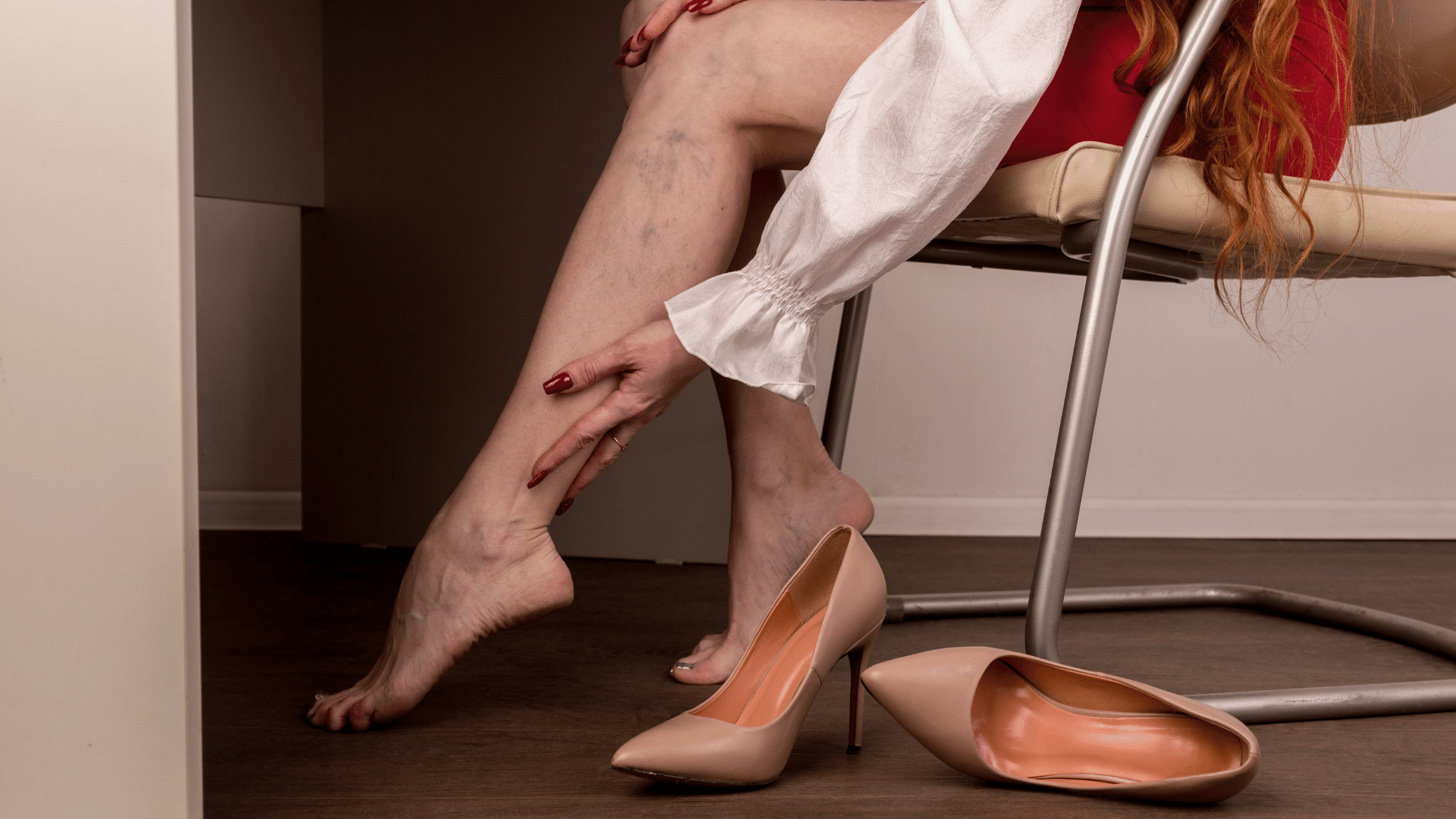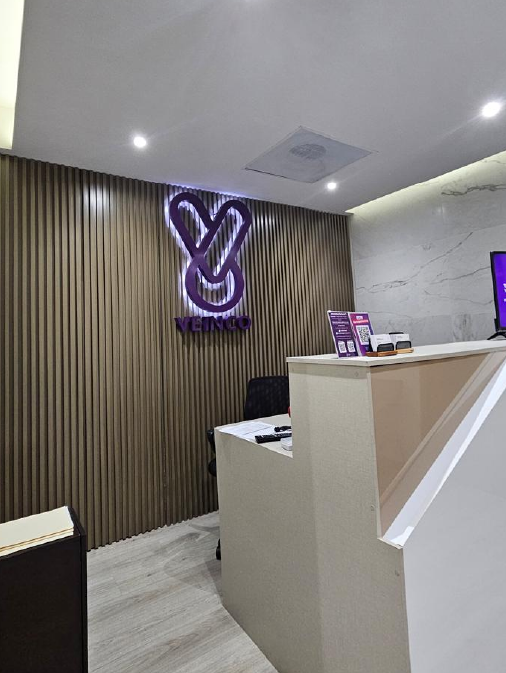
Learn the Main Causes of Varicose Vein Pain
The circulatory system is an essential part of your body. In fact, thanks to the continuous movement of blood, the tissues can receive the necessary nutrients. However, if your veins are damaged or present abnormalities, you may experience varicose vein pain, among other chronic health problems.
You should know that veins do not hurt or become swollen in a healthy state. Thus, any severe discomfort may require immediate medical attention by a vein specialist or chronic venous insufficiency expert. If you think that your legs need some help, do not stop reading, because in this article we will give you details about this condition so that you can anticipate it in the future.
How do varicose veins appear?
Veins function as small conduits, allowing deoxygenated blood to circulate throughout the body. They are also responsible for collecting blood from the tissues to the heart, transporting it to the lungs, and taking it back through oxygenation.
Unlike arteries, veins work according to the volume that circulates through them, so they give way easily when there is an increase or decrease in blood. Veins contain small valves that function as gates to prevent blood from pooling so that blood flows directly to the heart and is not affected.
However, varicose and spider veins appear when the valve system begins to fail. In turn, this causes changes in venous flow that lead to varicose vein pain, discomfort, fluid buildup, and swelling in the legs and feet.
What causes varicose vein pain?
Chronic venous insufficiency occurs when the valve system found in its walls is damaged. As a result, this damage causes the veins to swell and protrude from the skin. All this happens because the valves can no longer fight gravity, which causes the accumulation of blood.
This condition is usually seen in women with hormonal changes, pregnancy, or who are overweight. However, men are not exempt, as around 30% of men develop varicose veins, especially after they turn 50.
Here are other reasons why veins may hurt:
- Deep venous thrombosis
- Thrombophlebitis
- Thrombosis
- Phlebitis
These conditions usually occur within hours or days until they become severe. Therefore, if you have any doubts or concerns, it would be extremely helpful to consult with vein specialists.
Vascular and venous insufficiency symptoms
Surely you are wondering, are varicose veins painful, and what are the symptoms? Well, here are some specific vascular symptoms that show the development of varicose veins:
Exhaustion in the legs
- Fluid deposits in the legs or ankles
- Muscle cramping
- Itchy legs
- A feeling of heavy legs
- Difficulty to walk
- Itching in the affected vein
- Prominent and visible veins through the skin
- Skin discoloration and appearance of ulcers
What can you do to avoid varicose vein pain?
There are various varicose vein treatments for venous disease. However, leading a healthy lifestyle is vital for preventing the appearance of varicose veins and avoiding varicose vein pain. We encourage you to implement the following recommendations.
Avoid constipation
Did you know that a fiber-rich diet reduces the appearance of painful varicose veins? Indeed, constipation is one of the enemies of varicose veins since it causes an increase in pressure inside the abdomen every time you go to the bathroom, and at the same time, the blood vessels dilate. Therefore, eating healthily and including a considerable number of vegetables would be highly beneficial.
Exercise regularly
A healthy diet must be coupled with physical activity, even more so when suffering from venous insufficiency. Some of the activities you can do are walking, running, swimming, yoga, or playing sports so that all the leg muscles will be in constant contraction, facilitating blood flow and keeping the blood vessels healthy.
Try to wear suitable clothing
Tight clothing, high-heeled shoes, or wearing a smaller size can worsen varicose vein pain. This increases pressure and favors the appearance of varicose veins and blood clots. In fact, health experts suggest wearing clothes that fit your size or are slightly larger.
Lift your legs
If you want to improve blood flow and reduce pain and discomfort, take short breaks each day to elevate your legs above the level of your heart. To do so, lie down with your legs against a wall or anything that can be of support.
Use compression stockings
If varicose vein symptoms include pain, tiredness, discoloring, and cramping, compression stockings can reduce them by causing blood to circulate upwards and prevent swelling in the legs and feet.
Vein treatments that help reduce varicose vein pain
A wide variety of varicose vein treatments near me can relieve pain and discomfort in the legs, improving overall vein health. Depending on the severity, location, and complication, at the Veinco Vascular Specialties, we can provide satisfactory results. Below are the most recommended treatments by specialists in varicose veins:
Vascular Angio radiology. It consists of a state-of-the-art non-invasive therapy that allows the vascular tree to be studied with great precision and to treat vascular contusions from within the vessels.
Vein surgery. Sometimes varicose veins require surgery, in which case, thanks to the experience and the use of the latest technology, your varicose condition can be successfully treated.
Radiofrequency. Radiofrequency consists of applying energy in the form of heat through a catheter on the varicose veins, very similar to lasers. Yet, radiofrequency does not cause blood coagulation but aims to alter the varicose vein, close the vein, and circulate blood flow through healthy veins.
Sclerotherapy. This method is minimally invasive and treats varicose veins and spider veins.
It consists of injecting a solution directly into the veins, whose objective is to irritate the vein’s inner lining, causing inflammation. The collapsed vein is reabsorbed by the local tissue, causing a gradual disappearance of the veins. This method is also highly effective on small varicose veins.
Transcutaneous laser. The laser does not damage the skin. It does not leave marks or cuts, or sutures.
On the contrary, it is used to heat the vein, destroying the large blood vessels, causing coagulation and thus becoming a scar and closing. Over time, this vein will disappear, eventually giving your legs a great look.
All the treatments for varicose veins mentioned above are safe and significantly reduce the symptoms of varicose veins. However, to find out which one suits you best, schedule a consultation with the vein experts at Veinco, and experience the ideal solution for your legs and feet health.
Reach out to Veinco Vascular Specialties today!
Now that you know the causes of varicose veins and the discomfort they may cause, you will surely want to take better care of the health of your legs and be aware of any signs of venous insufficiency. Regardless of the severity of the symptoms, it would be better to reach out to us to prevent future complications.
If you want to improve the aesthetics and health of your legs and overall vascular health, entrust our team, and experts will be more than ready to provide high-quality solutions at affordable costs. Do not miss this opportunity and request your first consultation to receive a free assessment at Monterrey, Mexico, the best place to enjoy world-class medical tourism.
Do you want to know more about our extraordinary minimally invasive treatments for varicose veins and spider veins? Do not hesitate to contact us at (888) 568-3409, or email us at hello@localhost. Also, The first consultation can be via a telephone call or video call. You only have to submit the contact form and a specialist will get in touch to make an assessment of each individual case.
Leave a reply

